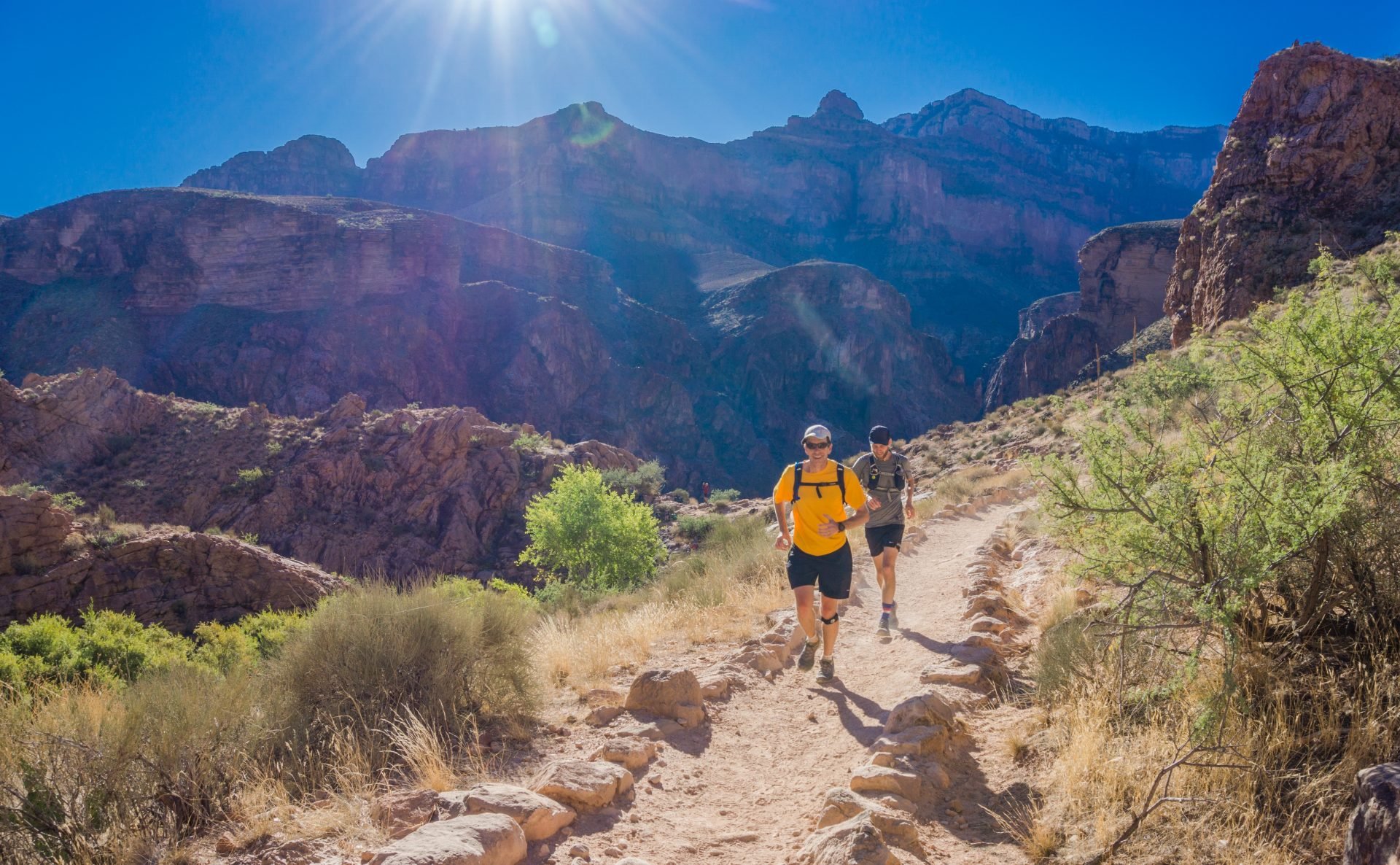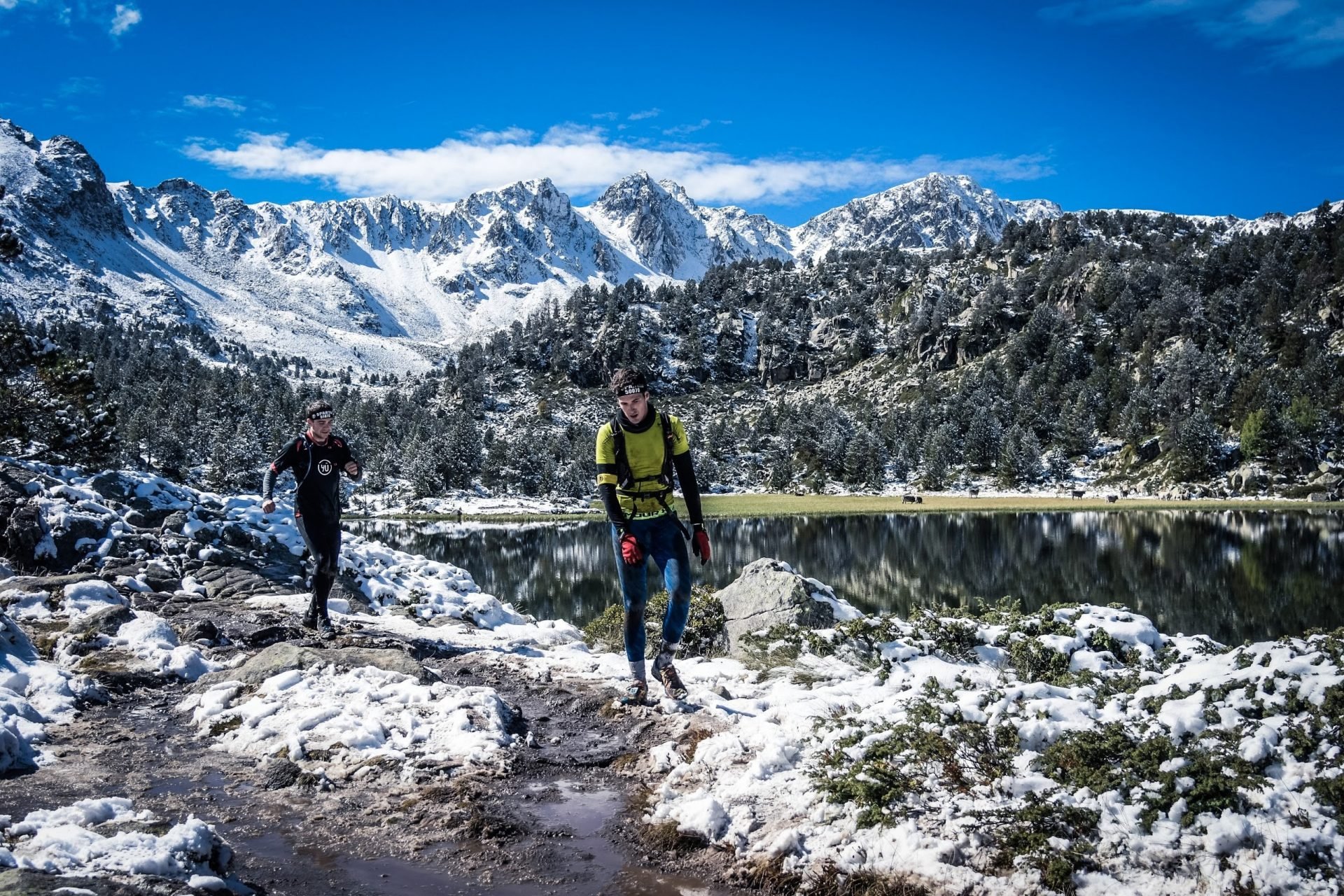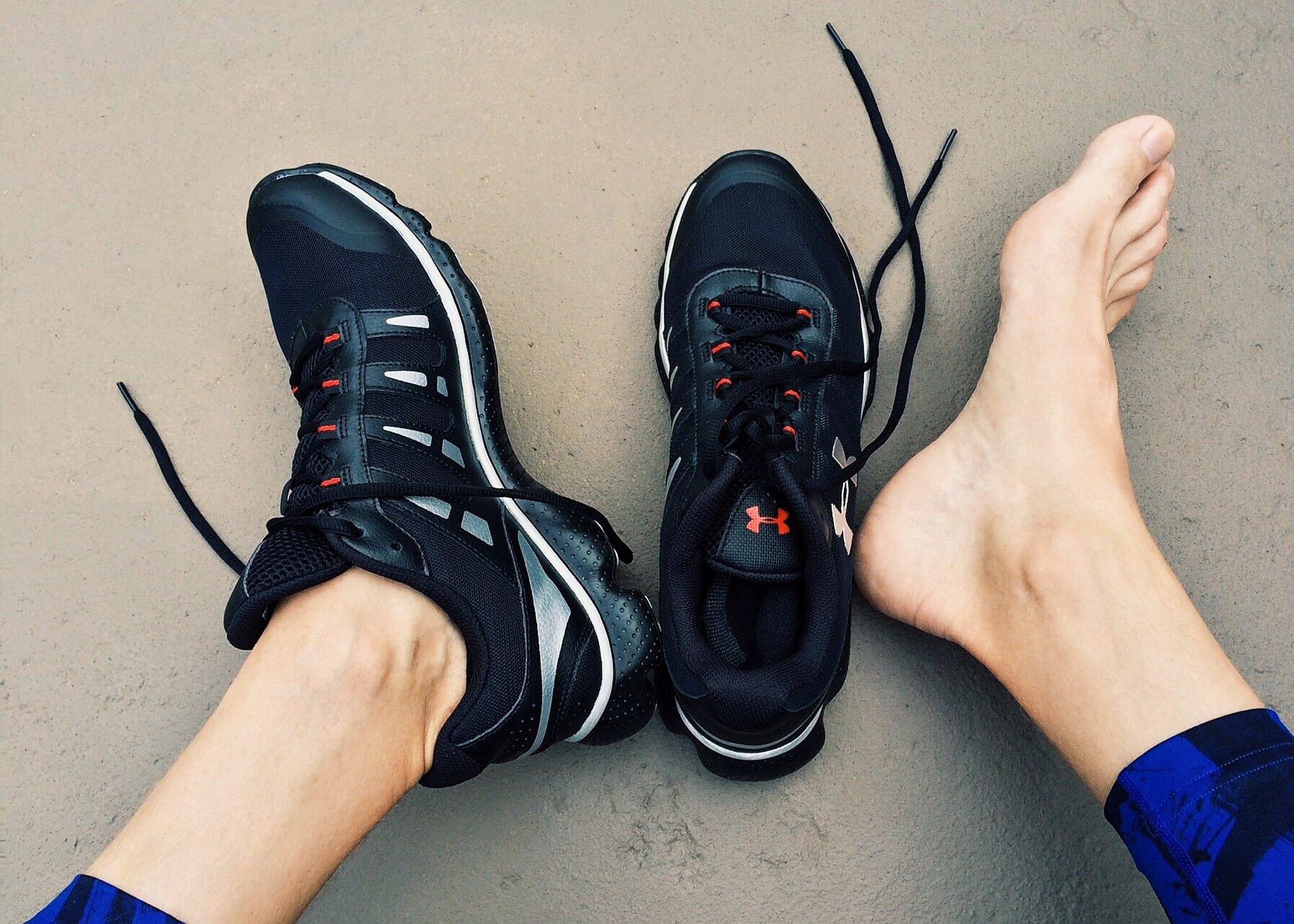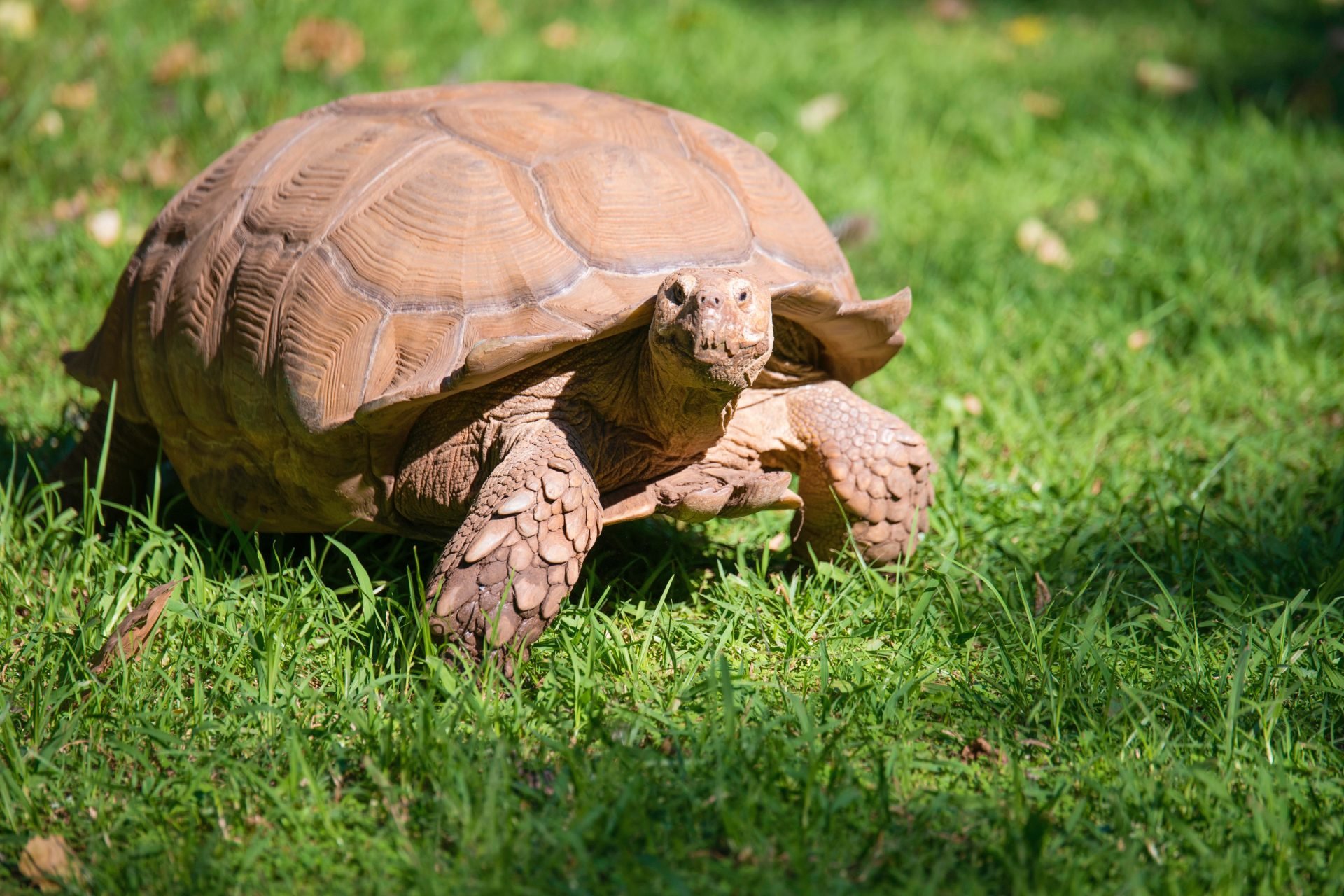What happens when you run a 200 mile ultramarathon?
Well, if you run 50 miles, you will change your life, and if you run 100 miles, you will rewire your brain.
But what happens when you quadruple the 50 and double the 100? What happens then?
Running 200 miles will not only reshape your mind…but it will BEND your reality. It’s one of the most transformative experiences available to endurance athletes.
And that’s just what a 200 mile ultramarathon will do…BEND your reality. It will reshape your mind and eliminate any remaining limiting beliefs left in your running.
And here’s the good news: you don’t need an elite level of physical stamina to finish a 200 mile ultramarathon. But you will need an elite mindset.
Running for 200 miles straight is not only a physical challenge, but it’s a MENTAL CONQUEST.
Doing the impossible and running 100 miles is an incredible feat. But to tie up your shoes to double the impossible will blow your mind. That or destroy it…whichever comes first.
But with the right training for both your body and mind, the 200 mile ultramarathon distance is quite possible. That is, as long as you have some solid ultramarathon running experience under your belt already.
If you are reading this, then chances are you have reached that familiar feeling as an ultra runner. That feeling of being ready to run a further distance.
If this sounds like you, then guess what? You are in luck! You have just stumbled upon one the best 200 mile ultramarathon guides available.
Actually, it’s one of the only 200 mile ultramarathon guides available. The fact is not many runners will ever try reaching a distance of such magnitude. There are few runners crazy enough to give it a go.
I was crazy enough and lived to tell the tale (joking…kind of joking…um…not really joking).
And here’s some more good news: in this guide, I provide my custom-made training program where you only run TWO days per week. It’s designed perfectly for us weekend warriors.
Pretty awesome, right?
It’s the same training program I used to finish my first 200 mile ultramarathon.
RELATED: 14 Simple Ways To Survive Your First Ultramarathon In One Piece
So, are you ready to get started?
First, I will offer my free custom 200-mile training program. Afterward, I will provide both training and racing tips to help you cross the finish line in one piece.
The tips will not be common. You won’t read tips like don’t experiment on race day, practice with your gear, and other basic ultramarathon advice.
I left it out. If you are attempting a 200 mile ultramarathon, then you should have already finished at least a 100 miler. With that understanding then you already know the basics, and I’m not here to waste your time.
These tips will be somewhat unique to help with the extra load both physically and mentally. It will also provide solutions to the common irritations you will face like chafing, nausea, and blistering. However, at the 200 mile level, these irritations can be race-ending if you’re not careful.
So, before getting into the training program, let’s discuss just how big of a commitment 200 miles will be.
STOP…before we go any further, please read the disclaimer below, and really consider if running a 200 mile ultramarathon is for you.
Was it easy? NO, every step was a painful step to the finish. Was it worth it? YES, every step of the way.
Disclaimer and Terms of Use: Effort has been made to ensure that the information in this guide is accurate and complete, however, the author and the publisher do not warrant the accuracy of the information, text, and graphics contained within the guide due to the rapidly changing nature of science, research, known and unknown facts and internet. The author and the publisher do not hold any responsibility for errors, omissions, or contrary interpretation of the subject matter herein. This guide is presented solely for motivational and informational purposes only.
A Massive Commitment Takes A Massive Follow Through
Unlike other distances, a 200 mile ultramarathon takes a HUGE commitment. Time spent training is more extensive, and travel expenses are much higher. Plus, you go from preparing for a race DAY to race WEEKEND. That’s because this type of event takes multiple days to finish.
Running a 200 mile ultramarathon is not like a quick local 50k where you spend a short time training, racing, and traveling. When preparing for such a long race, you must invest more of yourself.
It’s best to explain it this way…
Running a shorter distance like the 50k is similar to steering a speedboat. If there’s a kink in your plans, you can make quick sharp turns immediately. Changing the direction of the boat, meaning changing your racing plans, is quick and easy. Whether that be changing races, shoes, or even the way you fuel. The boat can quickly turn directions in seconds and doesn’t take much thought or time to do so.
Now let’s consider the 200 mile distance. Training for a 200 mile ultramarathon is like steering a cruise ship. As the captain of the ship, don’t plan on making a quick turn. Turning one of these around can literally take minutes. That’s versus a speedboat where turning takes seconds.
So, when you are committed to a 200 mile ultramarathon, changes can be costly. And they can take up a whole lot of energy. Unfortunately, it’s just not as simple as spinning a wheel.
The fact is there are not many 200 mile races available. Chances of finding another 200 mile ultramarathon close in date are small. And if there is one, it’s likely to be sold out.
Changing strategies while training for a 200 mile ultramarathon becomes difficult too. It will take time to change your approach like using different fuel or shoes. Think about it, to even begin testing a new strategy you must reach a far distance.
As ultra runners, we all know a strategy under 50 miles of running may not be effective over 50 miles. Consider the example of fueling. Using gels and other sugary supplements may work fine for the first 50 miles. But once you start running further into the race, that same strategy can backfire and cause severe nausea.
But you would have never known this unless you ran over 50 miles.
The point is this: changes in your 200 mile ultramarathon training takes a lot more time and consideration. The commitment to your race, fueling, gear, and other essential racing components requires much more time and effort.
So, do your best to avoid any changes to your 200 mile ultramarathon training. Simply put, make a FULL commitment. Put everything you have into it, become it, and if you decide to make changes then be assertive.
Remember this: every piece of the 200-mile training puzzle contributes to the big picture of race day. The big picture of running straight through the impossible and right on the other side of insanity.
So, now that you understand the commitment it will take, let’s get into the training program. Continue below for your FREE copy of The Two-Day 200-Mile Ultramarathon Training Program.
Introducing The Two Day 200 Mile Ultramarathon Training Program
As you may already know, I recently published a book titled A Runner’s Secret: One Run Will Get It Done. Inside the book, I teach my proven system to run any distance between a 5k to a 100 mile ultramarathon by running ONE day per week.
There are training programs for the following distances: 5k, 10k, half-marathon, marathon, 50k, 50-mile, 100k, and 100-mile.
(If you live a busy life but want to run frequent races, I suggest you pick up a copy, click here to grab a copy on Amazon)
Well, with A Runner’s Secret as my inspiration, I designed a 200-Mile program by running two days per week.
Below is the exact training plan I designed and used to run my first 200 mile ultramarathon. Please note, I highly recommend having a 100 mile ultramarathon under your belt before you begin.
Many struggles go along with preparing and running a 200 mile ultramarathon. Your best running coach is your last stride. Meaning, experience, and mistakes are your best preparation for running further distances. And…well… as you probably already know, we sure go through a lot of struggles when it comes to running 100 miles.
So if you are ready, take a look at The Two Day 200 Mile Training Program. Simply click the button below and receive a pdf version of the program.
So there you have it, your very own Two Day 200 Mile Ultramarathon Training Program. As you can see, it’s unlike any other 200 mile ultramarathon training program you’ll find. Actually, it’s unlike any training program you’ll find…anywhere.
You will also notice there are some longer than average training runs involved. Remember—every piece to the 200-mile training puzzle contributes to the big picture of race day. Those long training runs are essential to your success. They put you on your feet for longer to prepare your legs for the 200 mile distance.
So now that you have your training program, let’s dive into a few quick training tips. I have listed a set of tips to help training go a bit smoother. As mentioned, I left out the basic ultramarathon tips that you know from running 100 miles.
For basic tips, you can pick up a copy of my bestseller, The Ultra Marathon Guide: A Simple Approach To Running Your First Ultramarathon.
It’s packed with ultramarathon essentials like hydration, gear, packing, and even mental strategies.
However, the following tips are geared mainly for the 200 mile distance. They are what stood out most to me in MY training for my first 200 mile ultramarathon.
200-Mile Training Tips
If you are reading this, then you are most likely a 100 mile finisher. You know how to run ultra distances so you will know what to expect. However, what I will provide are a few different steps I took that differed from 100 mile training. There were a few small tricks that helped me when training for my first 200 mile ultramarathon and in a BIG way.
So, read on for those useful tricks. When added to your own training habits, it will prepare you for the insane distance you are about run. A distance that will shake up your world. A distance that will REDESIGN your world.
Training Tip #1: Run Long and Slow
For most, the 200-mile distance is about one thing and one thing only: crossing the finish line. Sure, some of us want fast times and placements. But unless you are an elite athlete, how you finish is only relevant to who shows up on race day.
So, if you are a weekend warrior reading this, I suggest you take your training slow. Focus solely on putting the time in on your feet. Set a personal goal, and on race day focus on reaching it. Don’t worry about how your finishing time compares to another.
As you will notice from the training program you downloaded, it’s a consent progressive mix of long runs. Yes, there’s a method to my madness, but for this type of guide, I will not explain the details as I do in my books.
You can find a basic explanation in my new book, A Runner’s Secret: One Run Will Get It Done.
Long runs at a slow pace were the key to running my first 200 mile ultramarathon. Continuously building your aerobic base is essential to create a strong and sturdy foundation that will not break after days on your feet (yes days!).
The majority of the time training I spent running at a slow race like pace. I hardly picked up speed, and that holds especially true on the second day of training each week. I believe taking it easy on day two had a significant impact on preventing injury.
I’d also recommend staying away from designated days like hill or speed training. If you want to run hills, put them on your route and force the adaptation process. This will build a pair of legs that can run the same size hills you will see on race day. Plus, you will not risk wasting any time. And naturally, if it’s a flat course then do the same on flat surfaces.
When training for my first 200 mile ultramarathon I ran very slow and took much shorter steps to avoid injury. This helped me dodge a knee injury that was lurking through the entire program. The knee pain was caused by jumping over a creek during a previous race.
By changing my stride length, I almost completely eliminated knee pain. I was able to continue moving forward in my training pain-free.
I’ve run almost 100 ultra distances in a 5-year span. Through the miles you start noticing helpful patterns in your running. Because of the back-to-back training runs, I put an extra focus on my knees to prevent injury.
Training Tip #2: Fall Asleep With Ice On Your Knees
My guess is most runners do not sleep with ice packs on their knees, and some will not agree with this. The fact is neither did I until I began to implement it into my 200 mile ultramarathon training.
You see, as my mileage increased I took ice packs, put them on my knees and wrapped them with ace bandages. I would then fall asleep with them on.
Not only did the ice prevent and cure knee pain caused by running back-to-back long runs; but, it also provided compression to my knees that lasted throughout the night.
Ice and compression are known to promote increased blood flow, quicker recovery, and decreased muscle soreness. Overall, your knees experience less fatigue.
Being a husband and father of two young boys, the whole 20 minutes on 20 minutes off just didn’t fit into my schedule. At least not for the 200 mile distance. With the extra time spent running, when I came home, it was off to work. And in the evening and on the weekends I would try my best to shift from crazy ultra runner to engaged super daddy.
So, one night to save time I wrapped my knees with ice packs and passed out writing on my laptop while lying on the couch.
When I woke up to run there was a noticeable difference. So, I reapplied the ice every night until my next run. When it was time to run again, there was a substantial improvement in how my knees felt. Pain and soreness were significantly reduced.
This method sure wasn’t something I found in a book or online. As you will notice from my other posts, a lot of the training I do is by trial and error. Think about it, there’s not much information available on 100 and 200 mile ultramarathon running. That’s because…well, there’s not many people who run these distances. It’s up to runners like you and me to create the solutions and share them within our community. That’s the entire reason I constructed this guide in the first place.
Next, read on as I offer the tip of running back-to-back long runs, this is already mapped out in your training program.
RELATED: Running Injuries: How To Avoid Injury And Run Pain-Free
Training Tip #3: Run Back-To-Back Long Runs
As you will notice from the training program above, running two back-to-back long runs is the core of the program. It allows you to run fresh one day, run with tired legs the next, and recover for almost an entire week for your next run.
The idea is it trains your body to run on a pair of dead legs. You know how to run on dead legs if you are a 100 mile finisher. It’s the feeling when you are deep into an ultramarathon, and you have no idea how your legs could possibly continue. But you find a way to keep moving forward by putting one foot in front of the other, nothing more, nothing less. The race shifts from running some astronomical distance to only the next step, that’s it.
So, you can follow The Two Day 200 Mile Ultramarathon Program, train your body for running on dead legs, and take the rest of the week to recover. Not a bad way of training for a weekend warrior, especially if you live a busy lifestyle.
Training Tip #4: Train During Your Favorite Time Of Year
During 200 mile ultramarathon training, you will do a lot more running than usual. If you follow this program, maybe you won’t run as many days per week, but you will go on more long runs. So, that’s why I recommend training during your favorite time of year.
For me, with all the extra time spent on my feet, I made sure I enjoyed the time when I was running. The weather had a considerable influence on that. By doing so, it wasn’t a painful process. I enjoyed it. I enjoyed all of it.
Where I live the summer temperatures range from the mid 80’s to the mid 90’s. Hot temperatures are my favorite temperatures. So, I made sure my training took place during the summer. Something about stepping out my door early in the morning to run in the warm summer air feels incredible.
So, besides a few cold and rainy days, my training was enjoyable. I felt alive and looked forward to most runs.
That was versus when I trained for a 116 miles race in the winter. Sure, I love to run, but constant long runs in freezing cold temperatures were tough. Sometimes it was discouraging. It wasn’t nearly as enjoyable as running with the warm summer sunrays shining on my face.
The point is this: take actions to make your 200-mile training as enjoyable as possible. When running in the temperatures you like most, you will turn the experience into a pleasant one.
Enjoy training, fall in love with it, and become it. By doing so, you will look forward to running, not to finishing. And that makes all the difference in the world.
You will then step away from the type of running where it’s a stressful buildup and release process. When you fall in love with the distance, and run in the moment, enjoying every step of the way, you become the run because you become the moment.
When you run in the present moment, the finish line disintegrates and time becomes an illusion. Now every mile is the same mile, and you can run extraordinary distances.
RELATED: Ultramarathon Motivation: 10 Tricks To Keep You Motivated As An Ultrarunner
Training Tip #5: Sleep For 2-3 Hours Before A Run
Ever run for 24 hours? That 12:00am-3:00am time frame is an eye closer. It becomes difficult to stay awake at times. At least, it always is for me.
During a 200 mile ultramarathon sleep deprivation intensifies. Think about it, unless you are an elite athlete cranking out mileage like Yiannis Kouros, you can be sure you will run somewhere between 48 to 100 hours. So for most runners, a cat nap or two will be required.
That’s where training on 2-3 hours of sleep comes in. It’s just enough sleep to reach the first period of REM and jolt right back out of bed to run. It will prepare your body to fall asleep for only a few hours and wake right up to run long distances. This will likely be the same sleep pattern you will have on race day. Although, you can sleep longer if you have time and don’t mind finishing the race later.
Also, if you wake up early enough then, your 200 mile ultramarathon training will barely affect your schedule. For example, there were many times I went to bed around 9:00pm-10:00pm and woke up at 12:00am to get out my door by 1:00am. This way, I could run a 30 or 40 mile training run before heading off to work. Only on occasion, I had to sacrifice family time which was during my 45 and 60 mile training runs. Even then, it was on the weekend, and I left my house by 1:00 or 2:00 am to arrive home at a decent hour.
The point is this: 2-3 hours of sleep before a long run will train your body for short periods of sleep during a 200 mile ultramarathon. It will also help prevent your extended training from consuming too much time away from your family.
Training Tips #6: Eat Clean To Stay Free Of Sickness
Please note: I am not a certified nutritionist and make no claims to the contrary. Each individual’s dietary needs and restrictions are unique to the individual. You are ultimately responsible for all decisions pertaining to your health. This is simply what worked for ME in MY journey to running a 200 mile ultramarathon.
Is it just me or do you find yourself washing your hands a bit more as race day approaches?
Okay, so I may start to grab handles with my shirt sleeve and stay away from large crowds during the month of my race. And race week if I had the opportunity to live inside a plastic bubble, I probably would.
But unfortunately, sometimes we cannot avoid a cold. I will never forget the night I got off the plane for a big race and came down with a fever. It was 24 hours before race start, and I was down and out.
After downing nearly an entire bottle of vitamin C periodically throughout the day, many herbal teas, and a lot of sleep, I somehow beat the sickness. Race day morning I woke up in a puddle of sweat and ran 116 miles across Florida with only mild symptoms of a cold.
But not everyone will be so fortunate. I always wasn’t. I’ve run races with a cold to the point of catching pneumonia.
So, to avoid such a situation and risk missing your race and compromising your training, there are preventative measures you can take. And it all starts with nutrition.
Do you know why the majority of people get sick during the holiday season? No, it’s not from the germs themselves.
What really happens is during the holidays we drastically stress our bodies. We overeat, stuff our faces with deserts, consume way too much alcohol, stress out about family functions, and get hardly enough sleep.
And what do all these behaviors lead to?
Well, they completely rundown our bodies which compromises our immune systems. We turn our bodies into the feeding ground of virus and bacteria. Now becoming sick is a near guarantee.
If you are making a commitment to run 200 miles, I’d suggest making an equal commitment to clean eating.
Try to lay off processed foods and overindulging in alcohol. Eat more green water-soluble vegetables and good fats. On non-training days get a good night’s sleep and avoid staying out too late.
Sure, you may get by on a poor diet, and I know some ultra runners promote alcohol consumption during training. However, feeling healthy will only benefit you. Weeks out from the race I increase my vitamin C intake and really fine tune my fat metabolism. I practice long fasts and running on empty.
I wrote about the process in The Ultimate Guide To Fat Adapted Running.
There’s no right or wrong way to eat if we eat clean. Our bodies all function and respond differently to different foods. I am not a nutritionist, and I do not claim to be one. But I think most will agree that an acidic lifestyle leaves our bodies vulnerable to disease. And as runners, that’s something we’d like to avoid at all cost especially when race day approaches.
Remember— a diet that promotes over-acidification of the blood and tissues creates an environment that is likely to increase the growth of virus and bacteria.
So, what are the top acidic addictions?
- Caffeine
- Nicotine
- Refined Sugar
- Alcohol
- White Foods
- Drugs
- Vinegar
By keeping them to a minimum, you have a better chance of avoiding sickness as race day approaches.
But at the same time, don’t drastically reduce one if race day is near. The cold turkey approach to addiction can promote withdrawal, which creates sickness as well.
Cutting your daily coffee consumption down from 3 cups to 1 may cause you to become sick before feeling better.
So, if you decide to cut an acidic addiction out, start early and stay in tune with how you feel.
RELATED: The Holistic Runner’s Guide: How To Lose Weight And Increase Energy Naturally
Training Tip #7: Stay Flexible In Your Training
Don’t strive to be perfect, just be YOUR version of an excellent effort.
Striving for perfection when training for a 200 mile ultramarathon will often lead to poor results.
What do I mean exactly?
Well, running every single training run on each assigned day for the entire length of your training program may not happen. We often live busy lives so we must be open to change as we go.
For example, there were days I ran Sunday+Monday and then Thursday+Friday and then back to Saturday+Sunday. As long as I was getting in BOTH runs with around 5 days’ rest, then it was good enough for me.
I even ran longer by accident. For example, you will see there is a training run 60 miles followed by a 20 mile run. Well, the next day after running over 60 miles I went out and ran over 30 miles accidentally. By running the following week’s mileage within the same week, I ended up running around 150 miles in 7 days. But I kept moving forward and pushed my next run out a few extra days to allow my body extra time to recover.
The point is this: Stay committed to your running goals, but flexible in your training approach.
There’s an old saying that a tree that is unbending is easily broken. So don’t let an obsession for perfection compromise the goals you wish to achieve. Meaning, don’t let perfection get in the way of your results; the results needed to run a 200 mile ultramarathon.
And although running every single assigned day will be most beneficial, the truth is, missing a training run will NOT be a deal breaker. What’s more harmful than missing a training run is holding yourself to an all or nothing training mentality. Life happens, and no one is perfect.
If you strive for absolute perfection and miss a training run, then you may give up on your training program.
But if you are open to changes in your plan, and stay flexible, you can keep progressing forward, no matter what, and still make it to race day. So run long and be flexible.
Training Tip #8: Dig Deep Within Yourself
If a 100 miler is 50% mental then a 200 miler is 75%. Your body will break down, but it’s your mind that will carry you the rest of the way.
Usually, when I provide a tip on the mental aspect of ultra running, I get into inspiration. And although you will need to keep searching for inspiration during training, if you have run 100 miles then you know where to find it. So what I’m going to recommend is something that may surprise you.
Here’s the thing, you are going to spend a lot of time alone, alone with yourself and alone with your thoughts. It’s going to strip you down bare, away from the ego, and bring you closer to your authentic self. So it’s a good idea to make sure the “real you” is someone who you’d like to spend 200 miles with.
Because the truth is running 200 miles may wake you up to who you really are by letting go of who you imagine yourself to be. Or better explained, to who you think someone else thinks you to be.
It’s easy to confuse yourself with the definition of yourself given by yourself that was influenced by others.
So, during your 200-mile training, I recommend working on finding who you really are. Try to grasp an understanding of what life means to you and how you fit in it.
There are many roads you can take. It can be done through religious and philosophical readings, prayer and meditation, and even eating clean and fasting.
I’m not here to tell you what to believe, but I am here to provoke thought. All the answers we seek are discoverable from within. But there is no discovery without a search just like there’s no good without bad. And there is no growth without resistance, just like there’s no light without dark.
An effort towards your journey of self awareness will reduce the effort required towards your journey of 200 miles. So, try to seek forgiveness and forgive others. Forgive yourself for not knowing what you didn’t know until you experienced it enough to know it.
All emotions both negative and positive will escalate on race day. The highs are much higher and the lows are much lower. You know this best because you are an ultra runner.
That’s why it’s a good idea to let go of emotions like envy, jealousy, and resentment. Let go of expectations and trade them for appreciation. Negative thought is all unnecessary resistance that has the chance to surface and pull you down to the lowest of lows on race day.
Remember this: during a 200-mile ultramarathon the highs can take you to outer space, but the lows can put you in a race day grave.
So, take the time to do some self-work, forgive yourself, be grateful, and try to appreciate life for the miracle it is. You have the strength to run 200 miles…be thankful for that.
RELATED: The Top 11 Benefits Of Yoga For Trail Runners
Training Tip #9: Practice Running In The Present Moment
As a 100 mile ultramarathon runner, you’ve learned how to run in the present. It happens naturally. If you didn’t then running 100 miles would be a torturous experience. As ultra runners we know that it’s one foot in front of the other, and one way or another, we will cross the finish line.
Although you have some experience with running in the present, the fact is that running 200 miles will take a new degree of conscious awareness. Well, that is, if you want race day to go a bit smoother.
Can you observe the thinker of thought? Yes, but it takes practice to become the observer and during training is the best time to work on it.
Training is a time when you begin to learn how to anchor into the present moment, that is, run in the NOW. And when you find enjoyment in the journey, staying in the NOW will come easier.
For most, the present moment hardly exists. We get so caught up in our past and future that we never take a second to be still and take in the present moment.
As an ultramarathon runner who has run 200 miles, I’ve developed this skill naturally. But it’s not something I’ve mastered, and it’s not my goal to master it. For me, that’s a journey in itself.
It’s easy to get caught focusing on the past, that’s how most identify themselves, it’s who they are. And the future is where people want to go because they believe that’s when they will be free of their problems.
But here’s the dilemma—as you work toward that future place, even if you were to get there you would still be looking farther into the future. It’s a forward way of thinking. Sure, this way of thinking serves us to reach goals and to motivate us, but the key is to use it as a tool…not LIVE in the future.
But if you stay in the NOW—which separates yourself from the mind, meaning instead of BEING the THINKER you are the BEING, meaning you are the OBSERVER of thought, not the THINKER—you find the freedom you’ve been searching for all along. Because right NOW in THIS present moment, what problems do you have?
No, not 5 minutes ago or 5 minutes ahead, but right NOW in THIS moment, there are no problems.
Plus this helps align you with your authentic self and who you really are. And when you can be yourself 100%…there’s no better freedom in the world.
So understand that it’s not about forgetting the past and present, it’s just about using them as a tool rather than becoming lost in compulsive thinking.
By tapping into the present moment, and running 200 miles, measurements like ‘time’ and ‘distance’ become an illusion. This new perspective will only help you on the big day.
Enjoying the journey will keep you in the present moment. And if you practice focusing on your breathing, putting awareness on your five senses, and being grateful, you will find the NOW. It will become easier to fight the urge of doing something that will harm your progressive journey to your 200 mile ultramarathon.
That fact is, as endurance runners, especially those running 200 miles, learning to stay in the present moment is advantageous. It will not only help you in ultramarathon running, but it has the potential to transform your LIFE.
And if you practice it long enough, one day… you WAKE UP…
RELATED: Run Further With These 17 Uncommon Principles
200 Mile Racing Tips
Be sure to read this section before training. This way you can test new methods and strategies before your race. By doing so, you will avoid some of the most common ultramarathon downfalls on race day; downfalls that have the potential to lead to a DNF.
Here’s what I can tell you from experience, after running the first 100 miles, the race transformed. My 200 mile ultramarathon eventually went from running while preventing problems to running while finding solutions to problems.
Sure, I was facing my common issues like chafing and nausea that I now have solutions for. Those solutions I will discuss below. I expected those issues and handled them quickly. But I also experienced new problems like SEVERE blistering, overheating, and nosebleeds. These were issues that I haven’t faced in such severity, that is, issues I haven’t faced at the 200-mile level.
So this section is the problem-solving section. I will discuss issues you may face, and solutions I’ve found to work best for me. Hopefully, they work for you as well.
Racing Tip #1- Use My 4-Step Chafing Cure
As a species, we’ve learned that friction creates fire—a discovery that changed the fate of mankind. But, when it comes to our bodies, not quite the discovery we want to feel in our running shorts.
As an ultra runner, you have most likely experienced your fair share of chafing. The fact is if you are jumping up to ultra distances, your body is not ready for that amount of friction. It takes time for your body to adapt, even with anti-chafing products.
To prevent chafing, I wear compression shorts. I then apply an anti-chafing lube periodically between my legs and under my arms and nipples. Changing my clothes at night helps too.
But the 200 mile ultramarathon is different. If you are prone to chafing then it will take more effort. Personally, I use a 4 piece anti-chafing solution. I apply a Bag Balm+Saddle Ride+Desitin+baby powder combination. It works like magic. A few hours of applying will do the trick.
Trust me, I had to learn the hard way when it comes to chafing. During one of my 100-mile races I reached a point of near no return. It felt like razor blades were rubbing between my legs.
Luckily, one of the aid stations had a bag of cornstarch. I spent the rest of the race drinking my handheld with one hand and dumping cornstarch down my pants with the other.
I’ve felt the worst of it, but the problems we face lead to the solutions we find. Now I know what works for me. I hope it will work for you as well.
Last thing, if you do sleep a few hours, load up on Desitin and baby powder before lying down. It will work its magic while sleeping and you may be surprised how you feel afterward.
Overall I didn’t have many issues with chafing during my 200 mile ultramarathon. I’ve had severe issues in the past during 100 milers so I know how to quickly handle chafing. However, I wanted to share my cure with you because it will definitely be an issue for other runners and can lead to a DNF if you’re not careful.
Racing Tip #2: Fix Nausea FAST
Here’s another common issue for ultra runners and at the 200 mile level, can become a serious problem. Nausea is one of the leading causes of a DNF on race day. Again, this didn’t cause me much of a problem during my 200 mile race because I already developed a cure that works for me. But that’s only because I have faced severe nausea during 100 mile ultramarathons in the past.
Fortunately, I found a way to prevent and cure nausea during long ultramarathons. But it wasn’t always like that. I suffered from extreme nausea many times. But after trial and error, I narrowed down the cause and learned how to get rid of it.
When reading about nausea and running you find a lot of information on treating the effect. For me, that made no sense. There was a reason, that is, a CAUSE of my nausea and I became obsessed with finding a solution.
Some experts wrote how it’s simply from running too far. Well, I would NOT accept this conclusion. I believe we as human beings have only reached the smallest fraction of our true potential. If growth is the way of life, then our capabilities are limitless.
So what was the main reason for my nausea when running ultra distances?
The answer: SUGAR. Way too much SUGAR for way too long. It was a guarantee GI issue.
Whether you are using sugary foods, or drinks, or performance supplements like gels and sports drinks…after a while, it’s common for your stomach to become irritated.
To fix this issue during your first 200-mile ultramarathon, it takes a quick change in fueling. Anytime I feel even the slightest bit of nausea, I make a drastic reduction in my sugars and increase protein and fat.
For example, I now fuel with coconut water and eat watermelon later in the race. As I feel nausea start to creep in I switch to vegetable broth and almond butter for fuel. I will then typically have a cup of coffee if it’s night time. A small bit of caffeine also helps with nausea and provides a quick energy boost to make up for the reduction of sugar.
I used this same method when fueling with gels and sports drinks once upon a time ago. Nausea would come too but much quicker and it was more severe. But I learned that my upset stomach was strictly due to consuming way too much sugar.
But this discovery led to a concept that changed my life.
Remember…stress, resistance, adversity…when we learn from them they are not so-called “problems”, but GIFTS in our life to help us grow.
Eventually, I became a fat adapted runner. And this not only changed my running for the better, but it changed my life for the better too.
Racing Tip #3: Blister Maintenance Is Critical
I’ve had blisters before during a 100 mile ultramarathon, but I was always able to muscle my way through it. Unfortunately, this did not happen during my first 200 mile ultramarathon.
You see, I spilled a cooler filled with cold water on myself early on in the race. Eventually, this led to the development of two huge blisters on the bottom of my feet. It made every step a painful step for over 12 hours of running. Sooner than later I reached a sloth-like pace. The pain was tremendous and my pace was becoming too slow, I needed to do something about it…and FAST.
But the blisters were not the only problem. You see, I never dealt with severe blistering before. I didn’t know what to do. Some people said to pop them and some people said not too. Just like the nausea issue, there are many mixed solutions to the problem, so as usual, I went with my gut.
I was already running on top of my blisters for over half a day, and with how painful they were, I could barely take a step. So enough was enough, I popped the blisters and cleaned them thoroughly. I then applied a blister soothing gel.
Yes, I was aware of how popping them could cause an infection. But I was willing to deal with the consequences. I was there to run 200 miles no matter what sacrifices I had to make.
After the gel, I put blister band-aids on my toe blisters and stuck molefoam padding sheets under both feet. I then placed a gel blister pad under each foot. It was the gel pad that hooked onto the toe and sat under the foot. I then threw on some baby powder, put on a new pair of socks, and was fortunate to run another 70 miles to the finish.
Yes, it was still uncomfortable and somewhat painful, but it was bearable. And the pain from the blisters was only temporary. The pain from not finishing would have lasted a lifetime. So, with the blister treatment in place, I was able to continue on to the finish line.
Fortunately for me, my crew had access to a convenience store while I was running. So depending on your race, it may be a good idea to bring along a blister maintenance kit. You never know how severe blistering will be until race day.
You know what they say: better safe then your feet turning into two big blister balloons. Actually, no one really says that…but um…I do now.
RELATED: Avoid These 7 Common Mistakes That Lead To A DNF
Racing Tip #4: Use The Perfect Music Player Combination
Do you love listening to music when you run?
If so, you may face challenges during your 200 mile ultramarathon. Unfortunately, music players and cordless headphones won’t last this long.
What was my solution?
First, I ran with my iPhone attached to my hip which lasts much longer than any music player I’ve ever used. Next, instead of using cordless headphones, I went old school and used plugins.
When my phone died I simply grabbed my spare iPod and plugged my iPhone into a portable charger. When the iPhone reached a full charge I plugged the iPod into the portable charger. I brought back up headphones as well.
This technique allowed me to run with music for the entire time. And for the first time in a race, I had no music playing issues. It’s the best music player combination I’ve found for longer races.
An iPhone with plug-in phones alone seems like it lasts forever compared to using an iPod. The only disadvantage is the iPhone is much larger. But the extra weight was a sacrifice I was willing to make.
And here’s a bonus…you can use Apple Music so you don’t have to buy hundreds of songs before the race.
Music inspires me when I run, as it does for many. With this combination, I was able to run 200 miles inspired without any interruptions.
Racing Tip #5: Take It Slow
Even with all my training, experience, and mental preparation I still went out the gate too fast. I wanted to get ahead of my pace to provide cushion later in the race.
But the problem was I had no idea what was coming. There were many unknowns about the 200 mile distance.
Looking back I would have run slower, the whole time, and plan to do so the next time I run a race over 100 miles. A slower pace not only becomes easier to manage issues like blistering, but it’s much easier to prevent them as well.
With fewer problems, I could have run a steady controlled pace instead of bouncing back from fast to slow. I could have been the tortoise, not the hare. And although I finished in 2nd place, maybe I would have finished in a faster time.
But that’s just my assumption. It’s easy to be a Monday morning quarterback thinking back at all the should-haves and could-haves. You never really know how the day would have turned out by making changes to your approach. There are hidden blessings in all of our struggles. My goal was to finish, that’s it, and I accomplished my goal. I finished in one piece, and both the good and bad contributed to that.
Let’s Take It Home…Slowly
After the race, my body was destroyed. It was the worst post-race pain I’ve ever experienced.
When I reached my hotel room I needed sleep. It was only a few hours until my flight back home. But the pain in my legs hurt, A LOT. So much that I couldn’t sleep.
It was time to find one more solution to one more 200 mile ultramarathon problem.
So, I walked into the bathroom and laid on the floor. I wrapped the top part of my body in a blanket and stuck my lower body in the shower floor. With freezing cold water falling on my legs I was able to sleep for a few hours before inching my way over to the airport.
As I mentioned, running 200 miles is not only a physical challenge but it’s a mental conquest. You will spend hours on your feet, hours with yourself, and hours contemplating if you have what it takes.
Remember—running 200 miles will not only reshape your mind, but it will also bend your reality. You can run any distance imaginable, your potential is limitless.
The sky is the limit? No, far from it. Ultra runners race in the sky.
There are no limits in the sky. The only barriers that exist are self-created in the mind.
And when you reach the 200 mile ultramarathon finish line you will understand this more than ever.
So if you do decide to run 200 miles, be safe, it’s not exactly what I would call the healthiest type of challenge. But if you are after something more, something beyond the physical achievement, then the 200 mile ultramarathon may be for you. Some even say it’s the new 100 miles.
Thank you for reading, and enjoy every minute of your new life as a 200 mile ultramarathon finisher!
And if you haven’t already, don’t forget to read A Runner’s Secret: One Run Will Get It Done to learn how to run your next race buying training ONE day per week. As I mentioned, it contains training programs for each distance in this order: 5k -> 10k -> half-marathon -> marathon -> 50k -> 50-mile -> 100k -> 100-mile. Simply determine your starting distance, click an option below, and start training TODAY.
Click here for the eBook Version on Amazon
Click here for the Paperback Version on Amazon
Click here for the Audiobook Version on Amazon
Click here for the Audiobook Version on iTunes

And if you haven’t already subscribed to our newsletter for exclusive quotes and content, please enter your email below. Thank you for reading and Live On the Run!



















Leave a comment